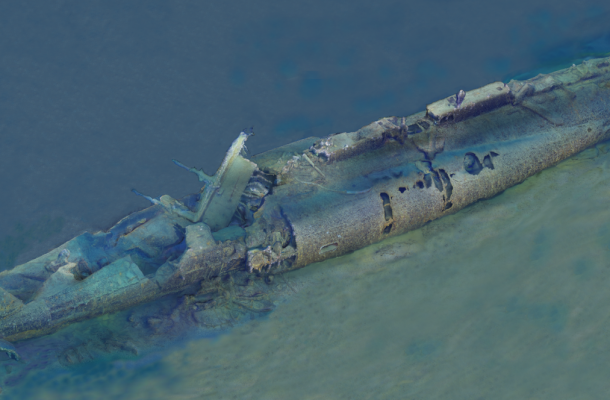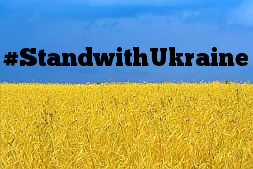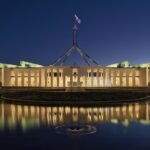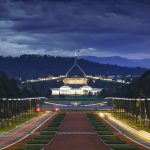3D images offer clues to the loss of Australia’s first submarine

Australia’s first submarine, lost at sea for over 100 years, continues to reveal its secret history through advanced 3D processing techniques of underwater still photography.
Researchers are digitally reconstructing the sunken HMAS AE1 using about 8500 still images captured of the submarine during an archaeological surveying expedition earlier this year, with the goal of gaining a better understanding of the submarine’s fate.
The interim results of this research will be presented today (June 22) at the Australian National Maritime Museum’s ‘Archaeology of War’ conference.
AE1 was the Royal Australian Navy’s first-ever wartime loss, lost on the evening of 14 September 1914.
After a multitude of search missions over the years, the vessel was eventually located off the Duke of York Islands in December 2017 by a team led by Find AE1 Ltd and supported by the Silentworld Foundation, the Australian Navy, the Submarine Institute of Australia, the Australian National Maritime Museum and Fugro N.V.
Dr Andrew Woods, Manager of the HIVE (Hub for Immersive Visualisation and eResearch) at Curtin University, explained the team has generated an interim digital 3D model of the shipwreck, providing the first ‘whole-look’ view of the vessel as it currently lies on the sea floor.
“The 3D model can be rotated to be viewed from any angle, showing the bow, stern, and fin with conning tower, and also clearly shows the implosion areas on the submarine over the control room and the forward torpedo room,” Dr Woods said.
Dr Woods explained one of the HIVE’s high performance computers spent about three weeks processing the dataset to generate the current low-resolution 3D model, and processing continues today to produce a high-resolution version.
“Conventional photography can only reveal a small section of the vessel at a time, not the whole wreck,” Dr Woods said.
“However, through the process of photogrammetric 3D reconstruction, we are now able to create a complete, realistic and detailed representation of what the wreck actually looks like in its current state, which allows us to ‘virtually visit’ the vessel as if we were physically present at the site on the sea floor – something that would be impossible for us to do in real life due to its depth and remoteness.”
The underwater photographs of AE1 were captured earlier this year when the Paul Allen-owned research vessel R/V Petrel embarked on a voyage, coordinated by Find AE1 Ltd., to the shipwreck site in Papua New Guinea.
Retired Rear Admiral Peter Briggs, Chairman of Find AE1 Ltd., explained during this voyage, Australian observers were able to utilise the ship’s Remotely Operated Vehicle, fitted with high definition video and still cameras to undertake a comprehensive, non-invasive survey of the entire vessel.
“This extraordinarily generous gesture by Paul Allen has provided a comprehensive photographic record of AE1, which a team of experts is now analysing to better understand what has happened to her. We anticipate issuing our report in September,” he said.
Researchers at Curtin University have been busy processing the dataset to generate 3D models.
Maritime archaeologists at the Australian National Maritime Museum will use the 3D models as a means to analyse AE1, which in turn will inform development of a shipwreck management plan, as well as future exhibition and interpretive initiatives.
This will be done in cooperation with the PNG National Museum and Art Gallery, and to tell the story of the AE1 to future generations in both countries.
The survey and associated research is a collaborative project involving Vulcan Inc, Find AE1 Ltd., the Australian National Maritime Museum, the Western Australian Museum and Curtin University, with support from the Royal Australian Navy, and the Submarine Institute of Australia.

Open Forum is a policy discussion website examining the social, political, economic, cultural and environmental issues of today. We welcome contributions and invite you to follow us on Twitter, Linkedin, Federated Press and Vivaldi Social. We #StandwithUkraine.












